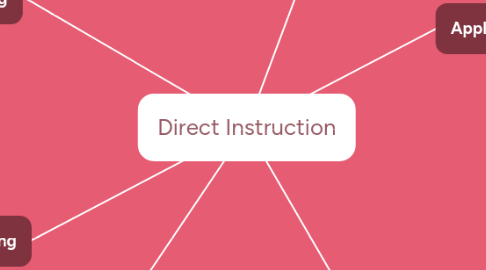
1. Planning
1.1. Use content with clearly defined attributes or steps
1.2. Develop clear goals and expectations for each step
1.3. Review the content before teaching and visualize it through your student's eyes
1.4. Use items in guided and independent practice that directly relate to the content that has been presented
2. Differentiating
2.1. Content
2.1.1. Differentiate how students access or experience the content by videoing the presentation for later viewing
2.2. Process
2.2.1. Vary student grouping and offer different choices for practicing content
2.3. Product
2.3.1. Provide multiple ways for students to demonstrate their learning; let them choose or give them a menu of choices
3. Benefits
3.1. Teaches linear thinking and problem solving
3.2. Develops the ability to complete a task automatically
3.3. Promotes content mastery and ability for completing tasks independently
3.4. Promotes self-knowledge; students learn about the content and themselves
4. Steps
4.1. Introduction
4.1.1. Describe lesson and objectives
4.2. Presentation
4.2.1. Present and demonstrate new content
4.3. Guided Practice
4.3.1. Students practice with guidance
4.4. Independent Practice
4.4.1. Teacher now a facilitator
5. Application
5.1. Teach procedural knowledge with clearly defined steps
5.2. Introduce new topics such as vocabulary, skills, processes or techniques
5.3. Reviewing or re-teaching foundational knowledge and skills
5.4. Teach content, knowledge or skills that are easily replicated and practiced
6. Technology Tools
6.1. Planning
6.1.1. Use videos or animations for introductory step
6.1.2. Use web-based search engines for useful teacher resources
6.2. Implementing
6.2.1. Multimedia presentation can enrich the explanation of a process
6.2.2. Connect with experts in the field
6.2.3. Give additional opportunities for guided and independent practice
6.3. Assessment
6.3.1. Use tools to record student learning to later analyze
6.3.2. Use online quizzes or audience response systems for quick and easy formative or summative assessment
